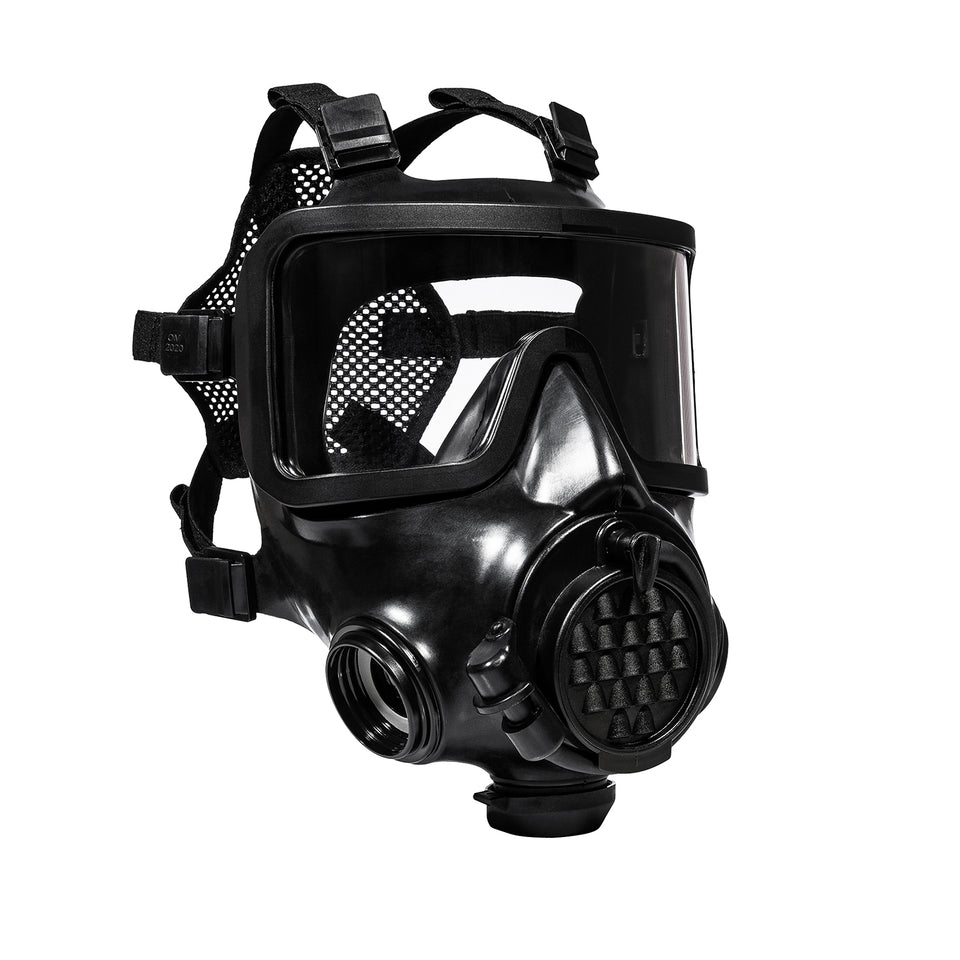On August 12, 2015, a series of massive explosions rocked the port city of Tianjin in northern China, sending shockwaves through the global community. What began as a fire at a warehouse for dangerous chemicals quickly escalated into one of the deadliest industrial accidents in modern Chinese history.
The Tianjin explosions left an indelible mark on the city's landscape and sparked a nationwide conversation in August 2015 about industrial safety standards in the Republic of China.
It's crucial to examine disasters like the Tianjin explosion to inform your CBRN preparedness strategy. By understanding what happened and why, we can better prepare ourselves and our communities for potential chemical hazards. This analysis isn't just academic - it's a vital part of ensuring our readiness for any CBRN threat.
Let's dive into the details of what happened in Tianjin, exploring its causes, consequences, and the lessons we can learn to enhance our own emergency preparedness.

The initial Tianjin fireball. (Image courtesy of NBC )
The Tianjin Explosion: A Timeline of Disaster Understanding the Scale: Comparing the Blasts Chemical Culprits: What Fueled the Tianjin Explosions? The Human Cost: Casualties and Aftermath Lessons Learned: Improving Industrial Safety Standards How to Prepare for Industrial Chemical Disasters Essential Protection Equipment for a Chemical Explosion The Lingering Impact of the Tianjin Disaster Frequently Asked QuestionsTable of Contents
The Tianjin Explosion: A Timeline of Disaster
The Tianjin explosion didn't occur in isolation - it was a cascading series of events that unfolded over several hours at the Port of Tianjin. Let's break down the timeline of this catastrophic incident:
-
August 12, 2015, 10:50 PM: The first reports of a fire at the Ruihai International Logistics warehouse in the Binhai New Area of Tianjin started coming in.
-
11:30 PM: The initial explosion occurs, registering as a 2.3 magnitude seismic event.
-
11:32 PM: The second explosion, much larger than the first, follows. This blast was equivalent to 21 tons of TNT.
-
11:34 PM - August 13, 2015: Several smaller explosions continue to rock the area as firefighters struggle to contain the blaze.
-
August 13, 2015: The Chinese government dispatches a team of nuclear and chemical experts to assess the situation at the explosion site.
-
August 15, 2015: Two more explosions occur at the disaster site, hampering rescue efforts.
The rapid succession of explosions in the port caught many first responders off guard, leading to significant casualties among firefighters and emergency personnel. The sheer scale of the disaster overwhelmed local resources, necessitating a national-level response from Beijing.

Source: Shubert Ciencia
Understanding the Scale: Comparing the Blasts
To truly grasp the magnitude of the Tianjin explosions, it's helpful to put them into perspective. The second explosion was estimated to be equivalent to the detonation of 21 tons of TNT. To put this in context:
-
The blast created a crater approximately 66 meters (217 feet) wide and 14 meters (46 feet) deep at the center of the explosion site.
-
The explosions were visible from space, captured by Japan's Himawari-8 weather satellite.
-
Seismographs detected the blast, with the China Earthquake Networks Centre initially mistaking it for a magnitude 2.3 earthquake.
-
Windows were shattered up to 3 kilometers (1.9 miles) from the blast site, well beyond the immediate radius of the blast site.
The force of the explosions was so intense that it damaged buildings within a 2-kilometer radius and was felt up to 10 kilometers away. Shipping containers were tossed like toys, cars were overturned, and entire sections of the port were reduced to rubble.

The crater left by Tianjin's massive explosion (Image courtesy of New York Times )
Chemical Culprits: What Fueled the Tianjin Explosions?
The Tianjin warehouse explosion was particularly devastating due to the hazardous chemicals stored at the site. Ruihai International Logistics, the company operating the warehouse, was licensed to handle dangerous goods. However, investigations revealed that the quantity and variety of chemicals present far exceeded what was permitted by the State Administration of Work Safety.
Key chemicals involved in the Tianjin chemical disaster included:
-
Ammonium Nitrate: A common fertilizer that becomes highly explosive under certain conditions.
-
Sodium Cyanide: A highly toxic compound used in gold mining and electroplating.
-
Potassium Nitrate: Another fertilizer component that can act as an oxidizer in explosions.
-
Calcium Carbide: A compound that produces flammable acetylene gas when it comes into contact with water.
- Sodium Nitrate: An oxidizing agent that can intensify fires and explosions.
The presence of these chemicals, along with others like nitrocellulose, contributed to the series of explosions and complicated firefighting efforts. In fact, a container of dry nitrocellulose was believed to be the initial source of the fire that led to the explosions. The water used to combat the initial fire likely reacted with some of these chemicals, causing them to detonate and exacerbating the situation.

Source : Wikimedia Commons
The Human Cost: Casualties and Aftermath
The Tianjin explosions extracted a heavy toll on human lives. According to official reports and BBC News coverage:
-
The final death toll stood at 173, including 104 firefighters and other emergency responders.
-
Nearly 800 people were injured, many suffering from burns and exposure to toxic substances.
- Thousands of residents were evacuated from the surrounding area due to air and water contamination concerns.
The fact that the explosions killed 173 people, including so many first responders, was particularly devastating. Many of these brave individuals rushed to the scene without full knowledge of the hazardous substances present, highlighting the critical importance of proper CBRN training and equipment for emergency personnel.
In the aftermath, the Chinese government faced criticism for its handling of the disaster, particularly regarding the lack of transparency in communicating the risks to the public. This led to widespread protests and calls for reform in industrial safety regulations.

Source: Voice of America
Lessons Learned: Improving Industrial Safety Standards
The Tianjin blasts served as a wake-up call for China and the international community regarding industrial safety standards. In the aftermath of the disaster, several key lessons emerged:
-
Stricter enforcement of regulations: The incident highlighted the need for more rigorous inspections and enforcement of existing safety regulations.
-
Improved emergency response protocols: The high casualty rate among first responders underscored the importance of proper training and equipment for handling chemical explosions.
-
Enhanced transparency: The Chinese government's initial reluctance to share information about the hazardous substances involved hampered rescue efforts and public safety measures.
-
Better urban planning: The proximity of hazardous chemical storage to residential areas was a key factor in the disaster's impact.
-
Increased corporate accountability: The disaster led to calls for greater responsibility from companies handling dangerous materials.
In response to the China explosions in Tianjin, the government implemented a series of reforms aimed at preventing similar incidents. These included stricter penalties for safety violations, improved emergency response training, and tighter regulations on the storage and transport of hazardous goods.

How to Prepare for Industrial Chemical Disasters
While industrial safety is primarily the responsibility of companies and regulatory bodies, individuals can take steps to protect themselves in the event of a chemical disaster. Here are some key preparedness measures:
-
Stay informed: Familiarize yourself with potential industrial hazards in your area.
-
Have an emergency kit: Include essentials like water, non-perishable food, first-aid supplies, and a battery-powered radio.
-
Know evacuation routes: Plan multiple ways to leave your area in case of an emergency.
-
Invest in personal protective equipment: A quality gas mask like the MIRA Safety CM-6M can provide crucial protection against chemical fumes and toxic substances.
-
Consider a hazmat suit: For comprehensive protection, a suit like the MIRA Safety HAZ-SUIT can shield you from chemical splashes and contaminated particles.
-
Learn basic first aid: Knowing how to treat chemical burns and exposure can be lifesaving.
-
Stay updated: In an emergency, follow instructions from local authorities and emergency services.
Remember, in a chemical disaster, every second counts. Having the right knowledge and equipment can make all the difference in ensuring your safety and that of your loved ones.

Source: SRA Quinton Russ, USAF
Essential Protection Equipment for a Chemical Explosion
To mitigate respiratory exposure to toxic industrial chemical plant disasters, we always recommend a full-face gas mask like the CM-8M.

Source: MIRA Safety
Full-face gas mask CM-8M
The CM-8M combines the best features from MIRA Safety’s most popular masks to give you a cutting-edge respirator that’s ready for just about anything—including an industrial spill or chemical plant explosion. More heavy-duty than the average on-the-job respirator, it provides full-face protection in the event of an emergency.
Note that you must keep your mask on until you’re certain that the air is safe and that you can safely decontaminate. After all, even if you’re in a car or a home, the area can still be contaminated. And since most gas mask filters are engineered to provide twelve hours of protection, you should have plenty of time.
For filters, we strongly recommend something like the VK-530 smoke filter.

Source: MIRA Safety
VK-530 smoke filter.
The VK-530 is a unique filter, because it doesn’t just work for inhaled chemical threats. It can also protect you from smoke inhalation, in case a chemical plant explosion turns into a roiling inferno like the one we saw in Tianjin.
It’s also important to have some sort of total-body PPE on hand if possible. But since you can’t carry a HAZ-SUIT everywhere you go, we recommend adding something like the M4 CBRN Poncho to your EDC.

Source: MIRA Safety
M4 CBRN Poncho
Unlike a full-body suit, the M4 CBRN Poncho can’t provide full-body protection. But it can provide a compact PPE solution that goes just about everywhere you go. Weighing in at just 23 ounces (less than 1.5 pounds), it comes folded in a compact package that can tuck into any backpack pocket.
Granted, the M4 isn’t a perfect solution. (Ideally, you’d want to combine the poncho with a hazmat suit.) But in the event of a disaster, it can still prevent bodily exposure to airborne threats and near-term fallout.
As soon as you’re safe, you should contact emergency medical services immediately. In the event of cyanide poisoning, antidotes such as hydroxocobalamin or sodium thiosulfate may be administered under medical supervision.
Cleanup is also best left for the professionals. So if you’re not directly involved, it’s best to get out of the way. That means you should take yourself and your family to a safe location, removed from airborne chemical threats, and wait until it’s safe to return.
Adhering to stringent safety regulations and guidelines is imperative for industries handling toxic chemicals. That means extensive and recurring employee training, airtight accountability, and frequent audits to make sure safety measures are being implemented.
The Lingering Impact of the Tianjin Disaster
The 2015 Tianjin explosions stand as a stark reminder of the potential dangers lurking in our industrialized world. This catastrophic event not only claimed hundreds of lives and caused billions in damages, but it also exposed critical flaws in industrial safety practices and emergency preparedness.
As we reflect on this disaster, it's clear that the lessons learned from Tianjin are relevant far beyond China's borders. Industrial accidents can happen anywhere, at any time, and being prepared is crucial. Whether you live near a chemical plant, a major port, or any industrial facility, understanding the risks and having the right protective equipment can be lifesaving.
Don't wait for disaster to strike. Take steps today to ensure you're ready for whatever tomorrow might bring. Because when it comes to chemical threats, preparation isn't just smart - it's essential.
Frequently Asked Questions
